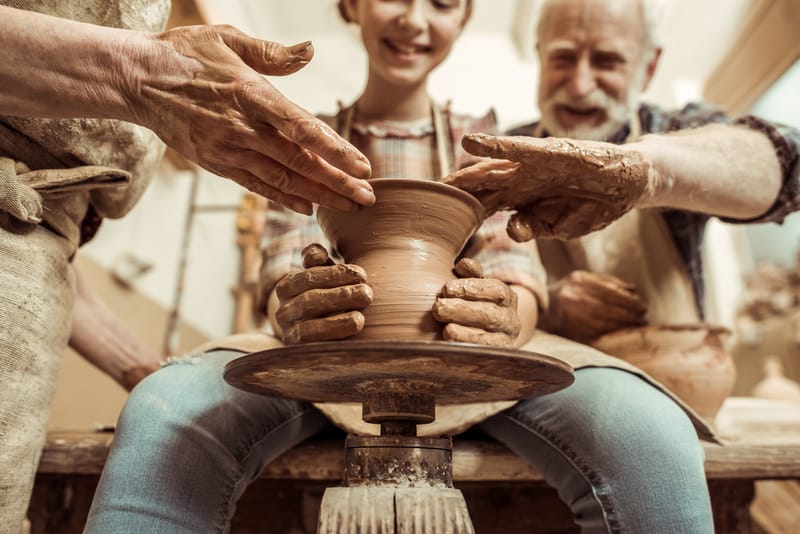Acupressure points for memory are important for solving poor memory problems in traditional Chinese medicine. Memory loss, unusual forgetfulness, and poor concentration can seriously impact the quality of one’s life.
Medically, memory loss, forgetfulness, cognitive impairment, dementia, amnesia, and all other memory-related problems are primarily linked to the brain.
But traditional Chinese medicine recognizes memory and cognitive problems as not just being related to the brain alone but also being connected to the kidney, spleen, heart, and liver. TCM believes that all organs of the body are connected by an invisible pathway called meridians.
TCM treats memory loss by applying pressure to acupressure points. These acupressure points are located all over the body.
We will be discussing five different acupressure points for memory improvement below.
What Is Memory Loss?
Memory loss can simply be defined as unusual forgetfulness. Every human experiences a level of forgetfulness at some point, but when it becomes a pattern and frequent, it’s a sign of memory loss. It can also be a sign of an underlying sickness like Alzheimer’s disease. Also, memory loss can result from chronic and prolonged stress.
Memory problems can affect your productivity because it results in a lack of motivation. You need to work on your memory, concentration, and focus when you notice that you are often distracted by different thoughts while working.
It is why acupressure points for memory loss and attention were designed to help you recover from memory loss and other mental distractions.
What Causes Memory Loss?
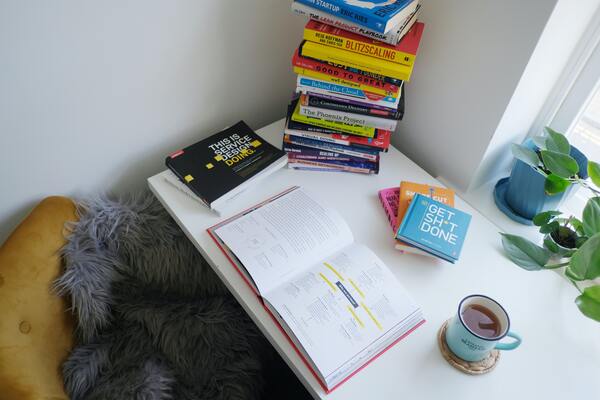
There are different factors responsible for memory Loss and lack of concentration. Although some studies have proven that memory loss can be genetic, some factors can predispose one to these conditions. These factors include:
- Age
- Medications
- Sickness
- Emotional Disorder
- Apnea
- Alcoholism
Can Acupressure Improve Memory?
The Chinese discovered traditional Chinese medicine (TCM) as an alternative to medical practices to relieve pain and improve memory. These are different acupuncture pressure points for memory loss and concentration in the body.
In this 2021 study, 180 older individuals with mild cognitive impairment went through acupressure and cognitive training. They were divided into 4 groups of 45 adults. One group was provided with cognitive training, another with acupressure training, the third with both acupressure and cognitive training, and the last was used as a control group.
At the end of the research, it was concluded that acupressure and cognitive training could significantly increase the cognitive functions of older adults with mild cognitive impairment. When both were combined, the results were more significant.
In this systematic review carried out on 12 studies on acupuncture as a cure for cognitive impairment in humans and animals, it was concluded that acupuncture had a positive effect when used to treat cognitive impairment in animals. However, the 3 studies done on humans were a bit inconsistent.
So, in conclusion, acupressure can have a positive effect on cognitive impairment and memory. Acupressure can be self-administered or done by a trained professional.
Acupressure Points For Memory
According to traditional Chinese Medicine (TCM), over 400 acupressure points run around the body where acupuncture can be carried out. They are classified as meridians, including lung, small intestine, large intestine, heart, bladder, kidney, liver, and pericardium—all these acupuncture points for memory improvement help to enhance and improve memory and overall health.
Just as the acupressure points for brain fog, here are different recognized acupressure points where acupuncture can be performed to help ease amnesia and enhance productivity.
Acupoint: EM-1 (Other Names: Si Shen Cong)


The sishencong EM-1 is made up of four acupoints located at the top of the head (on the vertex). It is 1.0 cun posterior, anterior, and lateral to GV-20 (see below).
Sishencong EM-1 is a calming pressure point both in babies and adults. In a study done on mice, it shows performing acupressure on the sishencong EM-1 acupuncture points helps calm the body, which in turn helps in treating insomnia, regulating sleep, and relieving many mental and nervous symptoms.
This promotes normal functionality of brain tissues, which is an important factor when it comes to treating memory loss.
Acupoint: GV-24 (Other Names: The Governing Vessel-24/Shen Ting/Spirit Courtyard)
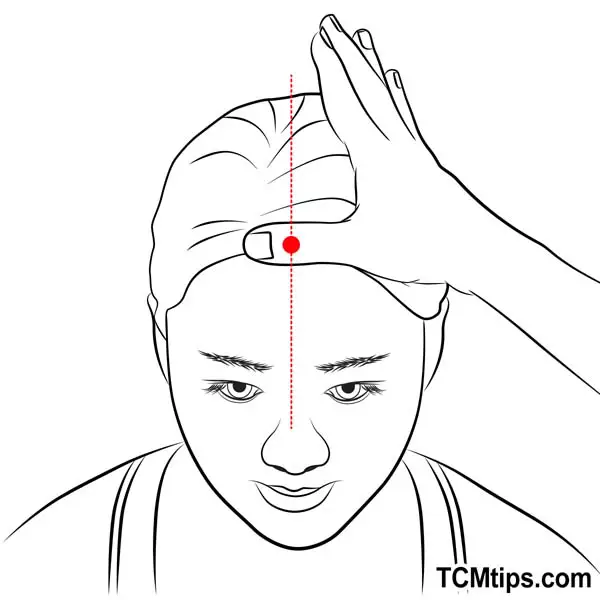
The GV-24 is the point where the governor’s vessel meets the foot-taiyang and the foot-yangming meridian. This acupoint is located right in the vestibule, which is considered the seat of the mind.
It is located 0.5 cun along the anterior hairline, positioned directly above the nose. It can be found in between the eyebrows, where the bridge of the nose meets the forehead.
Traditionally, the GV-24 is responsible for calming the mind. Carrying out acupressure on this acupoint helps in soothing frontal headaches, relieving anxiety, insomnia, heart palpitations, and also failing memory. They are also a good acupressure point for hair growth.
Acupoint: GV-20 (Other Names: The Governing Vessel-20/Bai Hui/Hundred Convergence)
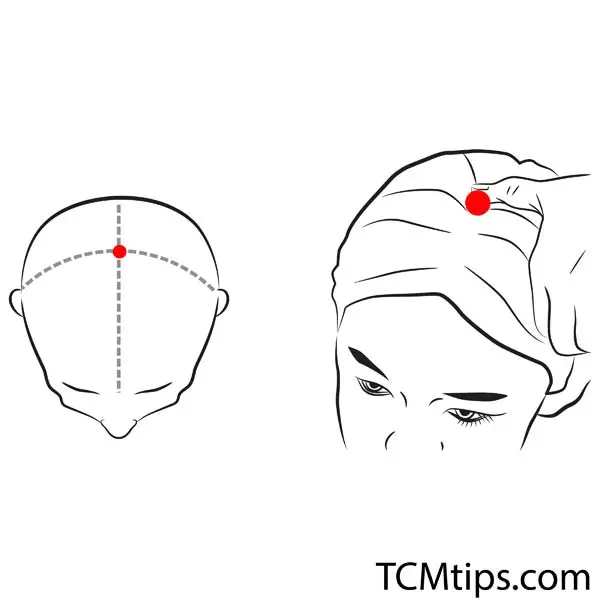
The GV-20 is used in acupuncture and acupressure to treat problems relating to psychology. GV-20 has a great influence on the brain, making it a good acupoint for treating memory loss. It also serves as a good acupressure point for better vision.
It is located at the top or crown of the head, about 7 cun above the posterior hairline. It sits at the middle of the line connecting the tips of the two auricles.
Applying a little pressure gently on this acupoint will help relieve headaches, nasal obstructions, forgetfulness, and also vertigo.
Acupoint: GB-20 (Other Names: Gallbladder-20/Feng Chi/Wind Pool)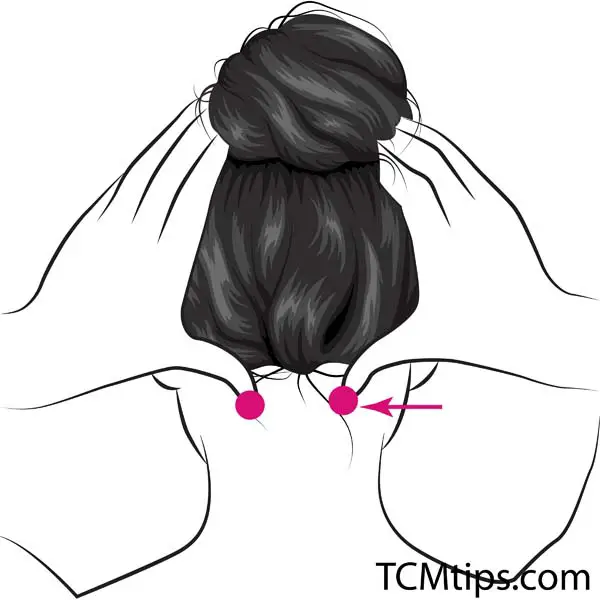
The GB-20 is a great acupressure point for neck pain and headaches, but when treated together with other acupressure points, it can help to relieve shoulder pain, migraines, and also memory loss.
It is located underneath the base of the skull. It can be found under the depression between the upper parts of the sternocleidomastoid and trapezius muscles.
This is an important acupoint as it helps eliminate neck stiffness which occurs as a result of poor blood flow in the head.
Acupoint: KI-3 (Other Names: Kidney-3/Tai Xi/Supreme Stream)
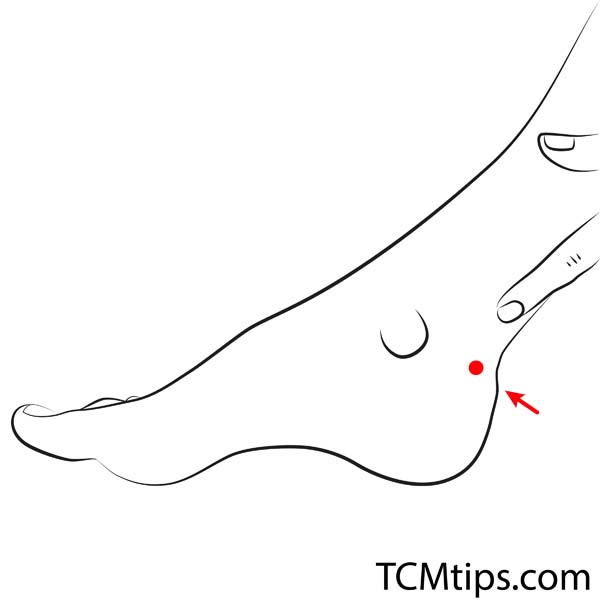
In traditional Chinese medicine, the kidney provides support to the brain. If the kidney gets weakened or is filled up with phlegm(blocking the flow of qi and blood to the brain), the brain is also affected, leading to amnesia or memory loss.
In a study, scientists also discovered that carrying out acupressure on the acupoint KI-3 can have effects on certain areas in the brain. Acupressure on KI-3 is also used to treat brain inflammation.
The KI-3 is located deep within the ankle, between the medial malleolus. Due to its location, it is also a great acupuncture point for treating Achilles tendonitis.
Conclusion
- EM-1 is a group of four acupoints that help to keep the body calm. This aids and supports the normal functioning of brain tissues, which is important in being able to remember things clearly.
- GV-24 are acupressure points for memory used to calm the mind, and performing acupressure on it helps relieve headaches, anxiety, and amnesia.
- GV-20 is mostly used in acupressure to treat psychological problems. With its great influence on the brain, it can also be used to treat amnesia patients.
- GB-20 helps relieve neck pain and headaches, which helps to relieve the brain of stress. When treated with other acupoints, they can help in reducing memory loss.
- KI-3 can aid in treating brain inflammation. Despite being located in the ankle, it directly has an impact on certain areas of the brain responsible for physical movements, emotions, hearing, sight, and also memory.

Try our Anti-Aging Gua Sha Tool designed to bring out your skin’s natural glow.
Best Gua Sha Product- Anti-Aging: The tool is designed to target 11 specific aging signs such as wrinkles and sagging skin. By following the 7-step routine, users can improve skin firmness and reduce fine lines naturally.
- Enhances Skincare Routine: It works effectively with serums and lotions, boosting absorption and efficacy of skincare products.
- Visible Skin Improvement: Users can expect a smoother complexion, reduced puffiness, and a more youthful appearance.
 P. Sze
P. Sze 

